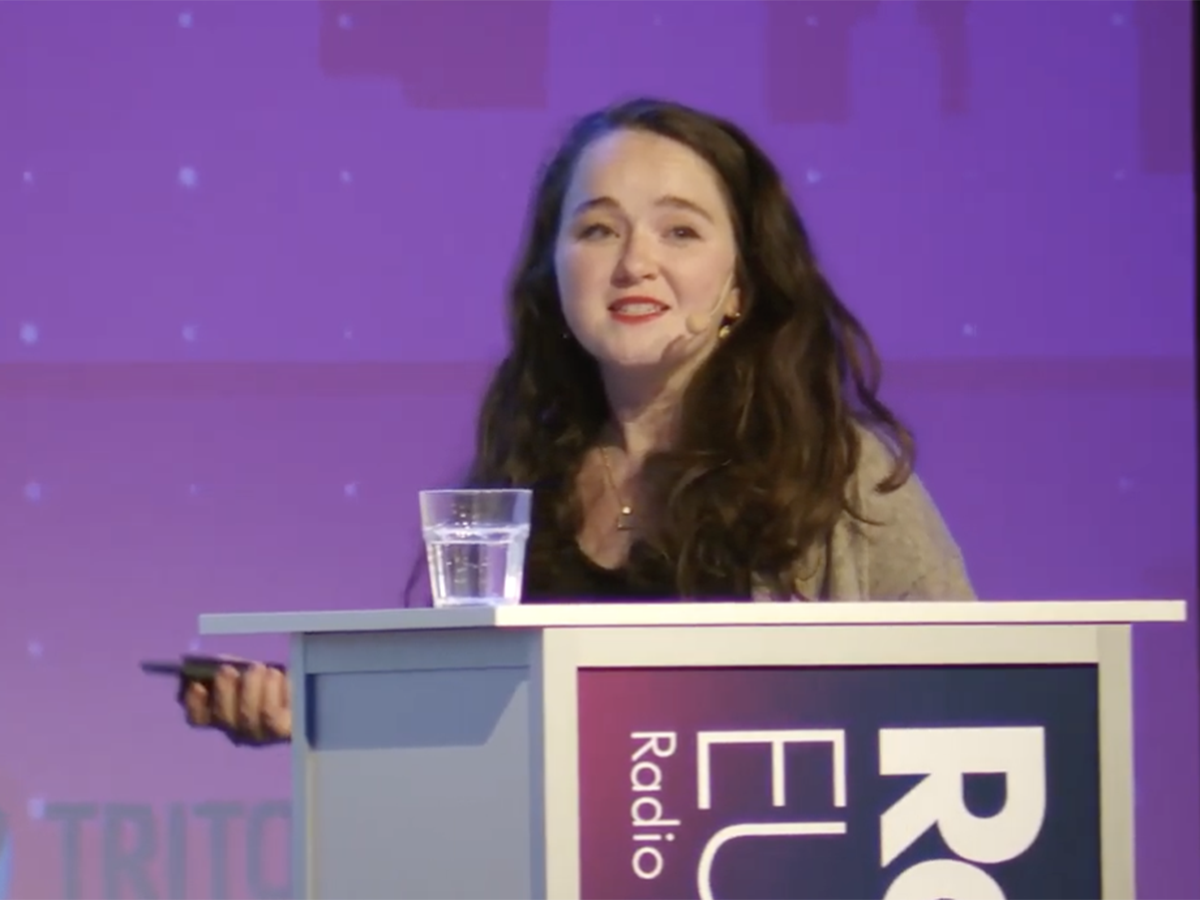Fact checking for news organisations has never been more important, especially with the amount of propaganda being issued from both sides in the Ukraine War.
At Radiodays Europe a workshop on truth checking featured Kayleen Devlin, a senior journalist within BBC Monitoring’s Disinformation Team who has investigated disinformation across a range of issues, from climate change to covid, to the war in Ukraine and the elections in the Philippines.
The Disinformation Unit at the BBC consists of BBC Monitoring, BBC Reality Check, BBC World Service and BBC Trending.
Kayleen outlined how the BBC verified one story from the war on Ukraine, showing the detail they can go to before something goes to air.
The story centred around a clip they received in mid-March showing the aftermath of an attack in Chernigov that killed 14 people who were standing inline waiting to buy bread.

Initially Russia called the initial US reports, that 10 people had been shot, Fake News, saying there were no soldiers in that area and that the event had been staged.

Verifying this story presented several challenges for the BBC team, who on first checks were unable to find someone who could verify the video.
The first questions they ask are
- Who is Responsible? Who is responsible and accountable for the attack?
- Are the Events Genuine? What is being claimed re location and date
Kayleen began by doing a reverse image search, something that can be done on sites like Google Images, Yandex and TinEye, which took her to the original posting of the video and the journalist who posted it.
They then contacted the journalist and were given an original copy that allowed the BBC to check the metadata so they could verify the date and time of the video.
Using the video they were then able to use Google Earth to compare images and identify buildings and verify that it was in fact filmed in Chernigov.
Next Kayleen and her team sought out eyewitnesses, one, with a military background, was able to tell them the kind of weapon fired judging from the sound and impact.
By asking him a number of questions, they were then able to establish where he was standing at the time of the attack and the probable direction of fire.
Using this information and satellite imagery released from Maxar, the team were able to establish that on the day of the attack, Russian artillery was stationed 14 km to the north-east.
After taking all this information and consulting weapons experts, the team were told that the location of the weapons and their type was consistent with the type of projectile that was fired.
The BBC was then able to publish the story.


